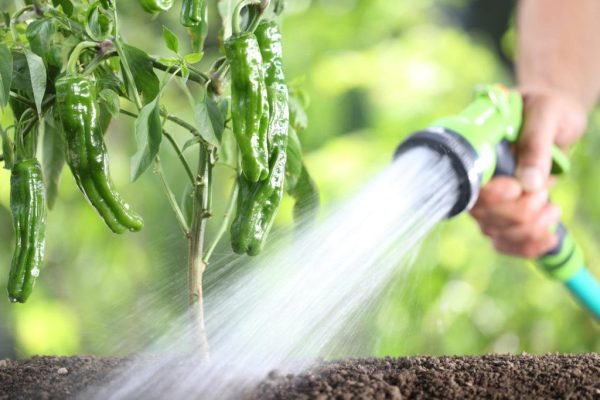In the previous article, we introduced the macro elements and secondary elements needed for plant growth. Today, we will introduce the 7 kinds of micronutrients necessary for plants: iron (Fe), manganese (Mn), zinc (Zn), Copper (Cu), Boron (B), Molybdenum (Mo), and Chlorine (Cl).
Although the demand for trace elements is relatively low, accounting for less than 0.01% of the total mass of organisms, their roles are crucial and irreplaceable. When these elements are absent from the soil or cannot be used by plants, plant health will be affected.
So what are the common trace elements? What are their effects? What happens if some element is missing? – Effects of Micronutrients on Plants

- Role of boron (B): Contributes to the development and growth of root tips. It also helps plants absorb calcium and transport sugars within the plant. Boron is essential during flowering and is an important element responsible for cell division and cell wall structure.
Symptoms of boron deficiency in plants: the top of the plant will stop growing and gradually die, and the root system will be underdeveloped. Leaves turn a sickly green, the leaves will be thick and shrunk while the plant will be dwarfed and the stem and petioles are easy to crack because they are brittle and thick; the flowers will be underdeveloped and the buds will fall off easily.
2. Role of iron (Fe): Iron is an important component of cytochrome, heme, ferredoxin, and various enzymes. It plays the role of transferring electrons in plants and is an essential substance in the synthesis of chlorophyll.
Symptoms of iron deficiency in plants: because iron is heavy it is difficult for plants to move it to all parts of its body if there is a deficiency so the signs will first manifest in young leaves. It is manifested as interveinal chlorosis, and when the deficiency is severe, all of the young leaves are yellowish-white. Iron deficiency often occurs in high-pH soil.
3. Role of zinc (Zn): It is a component and activator of various enzymes. More than 80 zinc-containing enzymes have been found to participate in the synthesis of auxin.
Symptoms of zinc deficiency in plants: Zinc deficiency occurs first in old tissues, the auxin content decreases, plant growth is hindered, internodes are shortened, and leaf expansion is inhibited.
4. Role of manganese (Mn): Manganese is a component of chloroplasts, which promotes seed development and early seedling growth and plays an important role in photosynthesis and protein formation.
Symptoms of manganese deficiency in plants: Symptoms start from the new leaves: the veins of the leaves are chlorotic and green, brown, or gray spots appear on the leaves, and gradually connect into strips. In severe cases, the leaves will be chlorotic and necrotic.
5. Role of molybdenum (Mo): Mo element is a component of nitrate reductase and nitrogenase; it contributes to the formation of protein.
Symptoms of molybdenum deficiency in plants: deformed new leaves with spots; poor growth and short plants.
6. Role of copper (Cu): It efficiently catalyzes the redox reaction of plants, promotes the metabolism and synthesis of carbohydrates and proteins, and effectively promotes plant photosynthesis.
Symptoms of copper deficiency in plants: Chlorophyll decreases, chlorosis occurs, and plant leaves fall off easily.
7. Role of Chlorine (Cl): maintains charge balance with cations, maintains pH, maintains cell expansion, regulates stomatal closure with potassium, and balances photosynthesis and water transpiration.

Symptoms of chlorine deficiency in plants: leaves face chlorosis, withering, thin and short roots, and few lateral roots.
Although they’re called “micronutrients,” they’re just as important as macronutrients. Providing only macronutrients and not micronutrients can leave plants weak and more susceptible to bugs and germs. If you want your plants to grow to their full potential, you should provide the proper micro and macronutrients.
If there is excess of S you should flush the roots with triple the amount of water than the capacity of the pot. After that, water your plants with a balanced fertilizer.
As always if you have any questions you can message our Instagram or Facebook and we’ll be glad to help you out! We’re happy you’re on this journey and we want to help in any way we can.
Subscribe to the VIVOSUN newsletter for growing tips, grower stories, and special offers, and get 12% off your first order!
We love the new VIVOSUN Smart Grow System and we are certain that you too will love it once you try it.
And join our Facebook farmer’s community for even more exclusive contests and prizes!
Download VIVOSUN App to get 18% off and explore more information!






